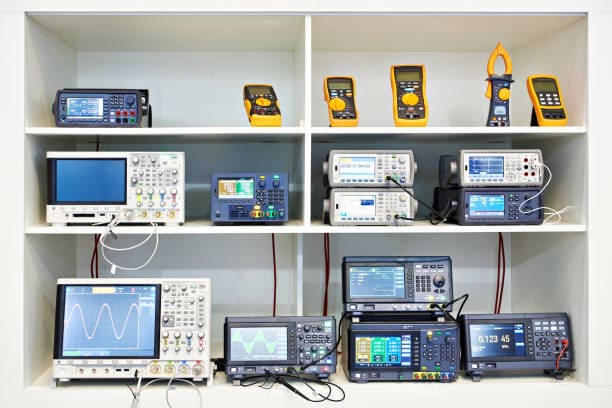The aerospace and military sectors demand extremely high standards of quality and reliability in the development, maintenance and testing of their electronic equipment. The selection of appropriate test and measurement instruments plays a crucial role in ensuring performance, safety and compliance with the stringent requirements of these industries. This article explores the essential considerations when selecting electronic test and measurement instruments for aerospace and military applications.
- Precision and reliability: Aerospace and military applications demand extreme precision. Test and measurement instruments must offer long-term stability and consistent accuracy to guarantee reliable results in often hostile environments. Certification of these instruments to international quality standards is often essential.
- High bandwidth for high-frequency signals: Aerospace and military communications frequently involve high-frequency signals. High-bandwidth oscilloscopes, spectrum analyzers and RF signal generators are essential for analyzing and testing these complex signals.
- Compliance with safety and quality standards: Test and measurement instruments must comply with safety and quality standards specific to the aerospace and defense industries. This often includes compliance with military standards such as MIL-STD (MILitary STanDards) and international aerospace standards.
- Resistance to Extreme Environmental Conditions: Operating conditions can vary considerably, from high-altitude environments to severe climatic conditions. Test and measurement instruments must be designed to withstand these extreme conditions, be they extreme temperatures, vibrations or high altitudes.
- Test capabilities for specific electronic components: Some electronic components used in aerospace and defense may require specific test methods. It is crucial to select instruments capable of testing these components accurately and comprehensively.
- Integration with existing systems: Test and measurement instruments must be compatible and integrable with existing systems, ensuring a smooth transition and operational continuity.
Conclusion: Selecting electronic test and measurement instruments for aerospace and military applications is a complex task, requiring careful attention to detail. Engineers and professionals in these industries must consider accuracy, reliability, standards compliance, environmental resistance and the ability to test specific components to ensure the success of their critical missions. By making strategic choices in instrument selection, these sectors can guarantee the quality and performance of their electronic systems.








